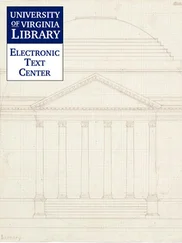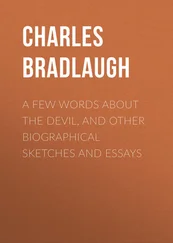Huzzah.
But wait, we missed an important aspect of the plan: delivery. How do we get the thermonuclear weapon inside the hurricane in the first place? While acknowledging we could drop it from an aircraft into the eye of the storm, Reed had other ideas:
A more suitable delivery would be from a submarine. It would penetrate a storm eye underwater at least a day in advance and record as many weather data and trends as possible before launching missile-borne devices. After diving for protection from the blast, it would resurface and continue recording storm weather and track data to be analyzed for discontinuous reactions.
Looking for “discontinuous reactions” was a very important part of the plan. Scientists in the United States had been experimenting with weather modification for years by this point—so-called cloud seeding, wherein we tried to use several specific compounds (silver iodide among them) to cause clouds to produce rain. The problem with this from the angle of scientific methodology is that it’s tricky to know if your cloud seeding mission caused the cloud to produce rain, or if it was going to anyway (it’s a cloud, and clouds sometimes form rain). Some scientists are still arguing today about how to correctly measure correlation versus causality in weather modification experiments. Reed was hoping to nip this in the bud before anyone could claim it was nature—not his nuke—that weakened the hurricane. The submarine’s continuous observation would help to prevent this kind of argument.
Something we haven’t yet discussed is radioactivity—and for something like this you’d think that would be front and center to the debate. To a degree it was, but not as prevalent as you might think. There is no such thing as a completely clean nuclear weapon, but Reed wasn’t wrong when he maintained that the newer fusion-based thermonuclear weapons were far less radioactive than their fission-based predecessors. To be sure, the radiation effects of a hydrogen bomb would still kill hundreds of thousands (if not millions) in any full-scale nuclear exchange between the United States and the Soviet Union. But in that case, we are talking about thousands (or tens of thousands) of warheads. This operation called for significantly less radioactive potential. Still, Reed understood the potential dangers:
Of course, a submarine should monitor for radioactivity rained out into the ocean surface and be prepared to submerge between periodic weather observations if high dose rates were encountered. Shielding by the water plus downward settling of radioactive fallout in the water would allow the necessary observations to be made without undue exposure of the submarine crew.
But even those not protected by an advanced submarine shouldn’t worry too much about the prospect of launching a nuclear weapon into a hurricane. According to Reed:
A clean device [he means cleaner; remember, there’s no such thing] would minimize lingering radioactivity placed in the atmosphere. An airburst [detonating the weapon a set distance from the surface of the water. Probably around a thousand feet] would result in no intense fallout [note the word “intense” rather than “none”] and the cloud would rise well above the storm to avoid rainout [radioactivity falling back to the ground via rainfall]. The majority of fission products [a fission bomb is actually used as the trigger for a fusion warhead] would form extremely small particles high in the atmosphere which would fall very slowly [so you can… get out of the way in time?]. There would be no hazard from the few large fallout particles which might form nor would there be an appreciable damage from the blast wave, if the shot were to take place over the open ocean far from civilization [people would be safe, but screw the whales].
To his credit, Reed was willing to put his money where his mouth was. Or at least, put American taxpayers’ money. At the end of his proposal, he called for a full-scale test of his idea. It was the only way to be sure. We needed to blow the living hell out of a hurricane.
For science.
Alas… no. Not a single person with any kind of authority was willing to even entertain the idea of nuking hurricanes. Later in life, Jack Reed bitterly chalked this up to his idea being “politically incorrect.”
Sure, buddy, that’s the reason.
It’s far more likely that most of the scientists who evaluated his plan realized the immense power of a multi-megaton nuclear weapon was still no match for the extraordinary amount of energy inside even a moderately strong hurricane. The Soviet Union’s 58-megaton Tsar Bomba would barely make a dent.
In addition, the experimentation that would be required to confirm (or more likely refute) Reed’s hypothesis would be extremely expensive—multiple nuclear weapons would be needed for testing, each costing millions of dollars.
Finally, the Reed proposal was coming at a time when the United States and the Soviet Union were working on an agreement to limit (and then eventually ban) atmospheric nuclear tests. It would do no good to approve an expensive, dubious operation that could have the unfortunate side effect of ruining years of diplomatic effort aimed at making the world a safer place.
The plan was dead on arrival.
AND THEN WHAT?
The Plowshare Program was discontinued at the end of fiscal year 1975. This was due to several factors, including insufficient public support, nonexistent congressional support, and a feeling that most of the tasks Plowshare was designed to accomplish could be done more cheaply and safely through conventional, nonnuclear means. Even natural gas production, which was the most promising use for peaceful nuclear explosions, could not be justified because of all the effort and technical requirements that would be necessary to reap any kind of tangible benefit. At the same time, alternative (nonnuclear) technologies were in development that could much more efficiently stimulate natural gas production.
Like hydrofracking. Whoops.
Even though the scientific community rejected Jack Reed’s idea, it didn’t mean that they were ignoring the threat of hurricanes. From 1962 to 1983, the U.S. government engaged in a series of experiments known as Project Stormfury. The program investigated the possibilities of modifying the strength of a hurricane through silver iodide cloud seeding technology. The hope was that they could artificially stimulate the eye wall, making it wider and therefore less powerful. Hurricane modification was tried in four hurricanes over eight different days. On four of those days, it seemed to work: The winds decreased in intensity by up to 30 percent. But don’t get too excited. Stormfury suffered from the same problems Jack Reed had identified and tried to mitigate in his proposal. It’s nearly impossible to distinguish between results from cloud seeding and those from naturally occurring intensity changes. Hurricane winds ebb and flow on their own, thus making it impossible to accurately measure the impact of the silver iodide.
But what if we wanted to dust off Jack Reed’s plan today and give it the old college try?
We couldn’t even if we had a sudden brain injury (or something) and thought it was a good idea. The Peaceful Nuclear Explosions Treaty, an international agreement signed and ratified by the United States in 1990, limited the yield of nuclear weapons for nonmilitary purposes to a paltry 150 kilotons.
Yet this hasn’t stopped well-meaning citizens from continuing to suggest using nuclear weapons to combat tropical storms. So much so, apparently, that the webpage of the National Oceanographic and Atmospheric Administration (NOAA) has a “Frequently Asked Questions” page that directly addresses this (still ridiculous) question. Whoever is the wonderful and patient person who is tasked with dealing with this nonsense should get a medal:
Читать дальше











